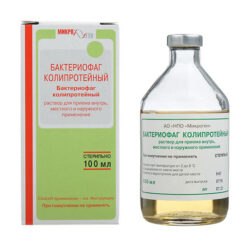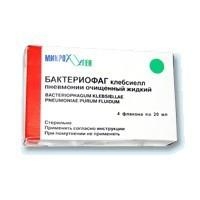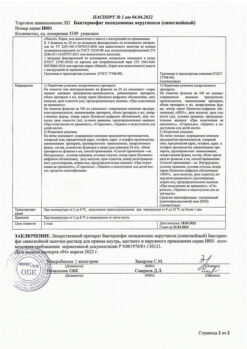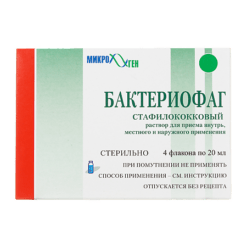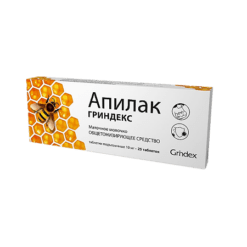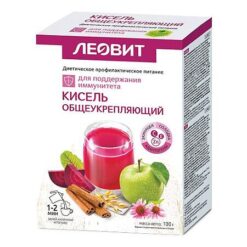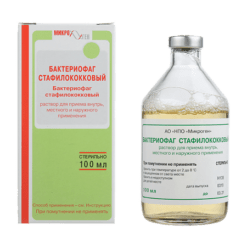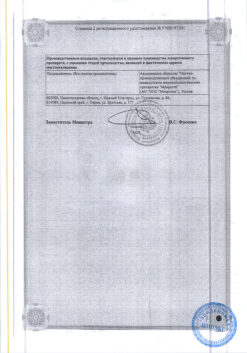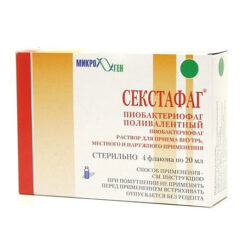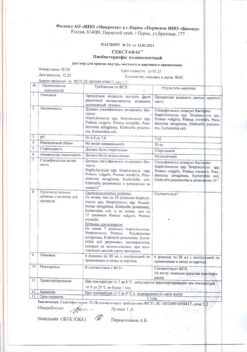No products in the cart.
Sertican, 0.25 mg 60 pcs
€1.00
Out of stock
(E-mail when Stock is available)
Description
The active ingredient of Sertican®, everolimus, is a proliferative signal inhibitor. Everolimus has an immunosuppressive effect by inhibiting antigen-activated T-cell proliferation and, consequently, clonal expansion induced by specific T-cell ILs (such as IL-2 and IL-15). Everolimus inhibits the intracellular signaling pathway that normally leads to cell proliferation triggered by the binding of these T-cell growth factors to their respective receptors. Blockade of this signaling by everolimus results in arrest of cell division at the G1 stage of the cell cycle.
At the molecular level, everolimus forms a complex with the cytoplasmic protein FKBP-12. In the presence of everolimus, growth factor-stimulated p70 S6 kinase phosphorylation is inhibited. Since phosphorylation of p70 S6 kinase is under the control of FRAP (so-called m-TOR), these data suggest that the everolimus-FKBP-12 complex binds to FRAP. FRAP is a key regulatory protein that controls cellular metabolism, growth, and proliferation; disruption of FRAP function thus explains the cell cycle arrest induced by everolimus. Everolimus has, therefore, a different mechanism of action than cyclosporine. In preclinical allograft models, the combination of everolimus with cyclosporine has been shown to be more effective than the isolated use of each.
The effect of everolimus is not limited to its effect on T cells. It inhibits growth factor-stimulated proliferation of both hematopoietic and non-hematopoietic cells (e.g. smooth muscle cells). Growth factor-stimulated vascular smooth muscle cell proliferation, which is triggered by endothelial cell damage and leads to neointima formation, plays a key role in the pathogenesis of chronic rejection.
In experimental studies, inhibition of neointima formation has been shown in rats with aortic allografts.
Pharmacokinetics
Intake. After oral administration, Cmax is reached after 1-2 h. In post-transplant patients, the blood concentration of everolimus is proportional to the dose in the dose range of 0.25 to 15 mg. Based on the AUC, the relative bioavailability of dispersible tablets compared to tablets is 90%.
The effect of food: Cmax and AUC of everolimus were decreased by 60 and 16%, respectively, when tablets were taken with very fatty foods. To minimize variability, Sertican® should be taken either concomitantly with or without food.
Distribution. The ratio of Everolimus blood concentration to its plasma concentration ranges from 17% to 73% and is dependent on concentration values between 5 and 5000 ng/ml. In healthy volunteers and patients with moderate hepatic impairment, binding to plasma proteins is approximately 74%. VSS in the end phase in patients after kidney transplantation on maintenance therapy is (342±107) L.
Metabolism. Everolimus is a substrate of CYP3A4 and P-glycoprotein. The main metabolic pathways identified in humans were monohydroxylation and O-dealkylation. The two major metabolites are formed by hydrolysis of the cyclic lactone. Neither of them has significant immunosuppressive activity. Everolimus is mainly found in the systemic bloodstream.
Evacuation. After administering a single dose of radioactively labeled everolimus to post-transplant patients receiving cyclosporine, most (80%) of the radioactivity was detected in the feces, with a small amount (5%) excreted in the urine. No unchanged substance was detected in either urine or feces.
Pharmacokinetics in equilibrium state
Pharmacokinetics in renal and cardiac transplant patients receiving everolimus 2 times daily simultaneously with cyclosporine in microemulsion form were comparable. Equilibrium was reached on day 4 with cumulation in the blood in concentrations that were 2-3 times higher than blood concentrations after the first dose. After drug administration, Tmax is 1-2 h. When taking the drug in doses of 0.75 and 1.5 mg twice daily, the mean Cmax values are (11.1±4.6) ng/mL and (20.3±8.0) ng/mL, the mean AUC values are (75±31) ng×h/mL and (131±59) ng×h/mL respectively. When administered at doses of 0.75 and 1.5 mg twice daily, the C0 of everolimus in blood averaged (4.1±2.1) ng/m or (7.1±4.6) ng/mL, respectively (C0 is the basal concentration determined in the morning before the next dose). Everolimus exposure remained stable at all times during the first year after transplantation. C0 was highly correlated with AUC with a correlation coefficient ranging between 0.86 and 0.94. Based on pharmacokinetics analysis in post-transplant patients, total clearance is 8.8 L/h (27% variation), central apparent VSS is 110 L (36% variation). T1/2 is (28±7) h.
Pharmacokinetics in special clinical cases
Hepatic disorders.In 8 patients with moderately severe hepatic impairment (Child-Pough class B) the AUC of everolimus was increased approximately 2-fold compared to that of 8 healthy volunteers. AUC correlated positively with serum bilirubin concentration and increased PV and correlated negatively with serum albumin concentration. If bilirubin concentration was >34 μmol/L, PV was >1.3 INR (prolongation >4 sec) and/or albumin concentration was
Kidney function disorders. Post-transplant renal failure (creatinine Cl 11-107 ml/min) did not affect the pharmacokinetic parameters of everolimus.
Pediatrics. Cl everolimus increased in a linear relationship with patient age (1 to 16 years), body surface area (0.49-1.92 m2), and body weight (11-77 kg). At equilibrium, Cl was (10.2±3.0) L/h/m2, T1/2 was (30±11) h.
Nineteen de novo patients after kidney transplantation between 1 and 16 years of age received Sertican® in tablet form dispersible at a dose of 0.8 mg/m2 (maximum 1.5 mg) twice daily with cyclosporine in microemulsion form. In these patients, the AUC of everolimus was (87±27) ng×h/mL, and was consistent with that of adults receiving 0.75 mg 2 times/day. At equilibrium, the basal concentration was (4.4±1.7) ng/ml.
Adult patients. Adult patients aged 16 to 70 years showed a 0.33% decrease in everolimus clearance per year (no dose adjustment required).
Based on a population-based pharmacokinetic analysis, total Cl was higher in non-Hispanic patients, on average, by 20%.
The effect on efficacy. In kidney and heart recipients at 6 months after transplantation, there was an association between the basal concentration of everolimus and the incidence of biopsy-confirmed acute rejection and thrombocytopenia.
Table
Kidney transplantation | ||||||
| C0, ng/mL | ≤3.4 | 3.5-4.5 | 4.6-5.7 | 5.8-7.7 | 7.8-15 | |
| No rejection | 68% | 81% | 86% | 81% | td> 91% | |
| Thrombocytopenia (9/l) | 10% | 9% | 7% | 14% | 17% | |
| Heart transplantation | ||||||
| C0, ng/mL | ≤3.5 | 3.6-5.3 | 5.4-7.3 | 7.4-10.2 | 10.3-21.8 | |
| No rejection | 65% | 69% | 80% | 85% | 85% | |
| Thrombocytopenia (9/l) | 5% | 5% | 6% | 8% | 9% | |
Indications
Indications
Prevention of renal and cardiac transplant rejection in adult recipients at low and intermediate immunological risk receiving basic immunosuppressive therapy with cyclosporine in microemulsion form and GCS.
Active ingredient
Active ingredient
Composition
Composition
active ingredient:
Everolimus 25 µg
How to take, the dosage
How to take, the dosage
Sertican is taken orally, either always with or always without food. The recommended starting dose of Sertican for adult patients with renal and cardiac transplants is 0.75 mg twice daily. The drug should be started as soon as possible after transplantation.
The daily dose of Sertican is always divided into 2 doses. Sertican is taken at the same time as cyclosporine in microemulsion form. The dosing regimen of Certican may need to be adjusted based on plasma concentrations achieved, tolerability, individual response to treatment, changes in concomitant drug therapy and the clinical situation. The dosing regimen may be adjusted at 4-5 day intervals.
Interaction
Interaction
Metabolized with the participation of CYP3A4 isoenzyme, is a substrate for protein transfer P-glycoprotein, therefore, use with potent CYP3A4 inhibitors or inducers is not recommended. P-glycoprotein inhibitors may decrease the release of everolimus from intestinal cells and increase its serum concentration.
Everolimus was a competitive inhibitor of CYP3A4 and CYP2D6, potentially increasing concentrations of drugs metabolized with the participation of these enzymes. Caution should be exercised when using everolimus concomitantly with CYP3A4 and CYP2D6 substrates that have a narrow therapeutic index. Bioavailability of everolimus is significantly increased with concomitant use of cyclosporine (CYP3A4/P-glycoprotein inhibitor). Cyclosporine as a microemulsion increases the AUC of everolimus by 168% (46-365%) and the Cmax by 82% (25-158%) compared to the use of everolimus alone. Dose adjustments for everolimus may be necessary if the dose of cyclosporine is changed. The clinical significance of the effect of everolimus on cyclosporine pharmacokinetics is minimal in kidney and heart transplant patients receiving cyclosporine in microemulsion form.
The use of everolimus after multiple doses of rifampicin (CYP3A4 inducer), increases clearance of everolimus by 3 times, reduces Cmax by 58% and AUC by 63%. Combined use of everolimus with rifampicin is not recommended. Taking a single dose of everolimus with atorvastatin (CYP3A4 substrate) or pravastatin (P-glycoprotein substrate) has no clinical effect on the pharmacokinetics of atorvastatin, pravastatin, everolimus and on total plasma HMG-CoA reductase bioreactivity. However, these results do not take into account the effects of other HMG-CoA reductase inhibitors.
Patients receiving HMG-CoA reductase inhibitors should be monitored for rhabdomyolysis and other adverse events. Moderate CYP3A4 and P-glycoprotein inhibitors (fluconazole, erythromycin, verapamil, nicardipine, diltiazem, nelfinavir, indinavir, amprenavir) may increase the blood concentration of everolimus. CYP3A4 inducers (St. John’s wort, carbamazepine, phenobarbital, phenytoin, efavirenz, nevirapine) may increase the metabolism of everolimus and decrease its blood concentration. Grapefruit juice affects cytochrome P450 and P-glycoprotein activity, therefore its concomitant use with everolimus should be avoided. Vaccination may be less effective during treatment with everolimus. The use of live vaccines should be avoided.
Special Instructions
Special Instructions
Treatment with Sertican® should only be initiated and performed by physicians experienced in immunosuppressive therapy after organ transplantation and who have the ability to monitor everolimus concentrations in whole blood.
In clinical trials, Sertican® was used concomitantly with cyclosporine in microemulsion form, basiliximab and GCS. The use of Sertican® in combination with other immunosuppressive agents has not been adequately studied.
The use of the drug in patients at high immunological risk has not been adequately studied.
The co-administration of Sertican® is not recommended with strong CYP3A4 inhibitors (e.g., ketoconazole, itraconazole, voriconazole, clarithromycin, telithromycin, ritonavir) and inducers (e.g., rifampicin, rifabutin) unless the expected benefits of such therapy exceed the potential risks.
It is recommended to monitor whole blood concentrations of everolimus when used concomitantly with inducers or CYP3A4 inhibitors and after their withdrawal.
Patients receiving therapy with immunosuppressive agents, including Sertican®, have an increased risk of lymphoma and other malignancies, especially of the skin. The absolute risk is related to the duration and intensity of immunosuppression rather than to the use of a particular drug. Patients should be monitored regularly for skin neoplasms, and exposure to UV radiation and sunlight should be minimized, and appropriate sunscreens should be used.
Hyperimmunosuppression, including with Sertican-based regimens, predisposes to the development of infections, especially those caused by opportunistic pathogens.
There have been reports of fatal infections and sepsis with Sertican®. In clinical trials, Sertican® was used to prevent the development of pneumonia caused by Pneumocystis jiroveci (carini) for 12 months after transplantation.
In patients with a persistent clinical picture of pneumonia when antibiotic therapy is ineffective and infectious, neoplastic and other processes not related to the use of drugs are excluded, interstitial lung disease should be suspected.
Prevention of cytomegalovirus infection was recommended for 3 months after transplantation, especially in patients at increased risk of developing this infection.
The co-administration of Sertican® with cyclosporine in microemulsion form in post-transplant patients has been associated with an increase in serum cholesterol and triglycerides that may require appropriate treatment. Patients receiving Sertican® should be monitored for hyperlipidemia and treated with hypolipidemic agents and an appropriate corrective diet if necessary. The risk/benefit ratio should be evaluated for patients who are found to be hyperlipidemic prior to initiating therapy with immunosuppressive agents, including Sertican®. The risk/benefit ratio of continuing therapy with Certican® should also be evaluated in patients with severe refractory hyperlipidemia.
Patients receiving HMG-CoA reductase inhibitors and/or fibrates should be monitored for adverse events caused by the above drugs.
Impact on the ability to drive and operate machinery. Studies of the effect of the drug Sertican® on the ability to drive and operate mechanisms have not been conducted.
Contraindications
Contraindications
Hypersensitivity to everolimus, sirolimus or other components of Sertian.
Side effects
Side effects
The following are adverse reactions possibly or probably associated with the use of Sertican® that have been reported in phase III clinical trials (kidney or heart transplantation).
Infectious diseases: often – viral, bacterial and fungal infections, sepsis; sometimes – wound infection.
Hematopoietic and lymphatic system disorders: Very common – leukopenia1; common – thrombocytopenia1, anemia1, coagulopathy, thrombotic thrombocytopenic purpura/hemolytic uremic syndrome; sometimes – hemolysis.
Endocrine system disorders: sometimes – hypogonadism in men (decreased testosterone levels, increased LH levels).
Metabolic disorders: very often – hypercholesterolemia, hyperlipidemia; often – hypertriglyceridemia.
Vascular system disorders: frequently – increase of BP, lymphocele3, venous thrombosis.
Respiratory system: often – pneumonia; sometimes – interstitial lung disease, pulmonary alveolar proteinosis.
The digestive system: often – abdominal pain, diarrhea, nausea, pancreatitis, vomiting.
Hepatobiliary system disorders: sometimes – hepatitis, liver function disorders, jaundice, increased levels of ALT, ACT, GGT.
Skin and subcutaneous tissue: often – angioedema4, acne, complications of surgical wounds; sometimes – rash.
Muscular system: sometimes – myalgia.
The urinary system: often – urinary tract infections; sometimes – renal tubule necrosis, pyelonephritis.
Others: often – edema, pain.
Note:
1 was found to be dose-dependent or this phenomenon was observed significantly more often in patients who received the drug at a dose of 3 mg/day.
2 in heart transplant patients.
3 in kidney transplantation.
4 predominantly in patients taking ACE inhibitors at the same time.
In controlled clinical trials in which patients were followed for at least 1 year, lymphoma or lymphoproliferative disease developed in 1.4% of patients receiving Sertican® (1.5 or 3 mg/day) in combination with other immunosuppressants. Malignant skin neoplasms were reported in 1.3% of patients and other types of malignization in 1.2% of patients.
The occurrence of these adverse events may depend on the degree and duration of immunosuppressive therapy. In the main studies, elevated serum creatinine concentrations were observed more frequently in patients receiving Sertican® in combination with full-dose cyclosporine in microemulsion form than in patients in the control group. The overall incidence of adverse events was lower with the reduced dose of cyclosporine in microemulsion form.
The safety profile of Sertican® in studies using the drug together with reduced-dose cyclosporine was the same as in the 3 main studies where standard-dose cyclosporine was administered. However, creatinine plasma concentrations were less likely to be elevated and had lower mean and median plasma creatinine concentrations when Sertican® was used with reduced-dose cyclosporine than in the other phase III studies.
In the use of m-TOR inhibitors, including Sertican®, lung parenchymal damage such as inflammation of the lung parenchyma (pneumonitis) and/or pulmonary fibrosis of non-infectious etiology have rarely been reported, with a single fatal outcome. In most cases, these adverse reactions disappeared after discontinuation of therapy with Sertican® and/or administration of GCS.
Overdose
Overdose
Everolimus has been shown in experimental studies to have low acute toxicity potential. No lethality or severe toxicity was observed in mice and rats (range control) after oral administration of the drug at a dose of 2000 mg/kg once.
Reports of overdose in humans are very limited. There is a single case of accidental ingestion of 1.5 mg of everolimus by a child aged 2 years, with no adverse events observed. In a single oral dose of up to 25 mg, acceptable tolerance to the drug was observed in post-transplant patients.
Treatment: General supportive measures should be initiated in all cases of overdose.
Pregnancy use
Pregnancy use
There are no data on the use of Sertican® in pregnancy.
Toxic effects on reproduction, including embryotoxicity and fetotoxicity, have been shown in experimental studies. It is not known whether there is a potential risk to humans. Sertican® should not be used in pregnant women unless the expected benefits of therapy exceed the potential risk to the fetus.
Women of childbearing age should be advised to use effective contraception during treatment with Sertican® and for 8 weeks after completion of therapy.
It is not known whether everolimus is excreted with human breast milk.
In experimental studies, everolimus and/or its metabolites have been shown to penetrate rapidly into the milk of lactating rats. Therefore, women receiving Certican® should not breastfeed.
Additional information
| Shelf life | 3 years |
|---|---|
| Conditions of storage | In a dry, light-protected place at a temperature not exceeding 30 °C |
| Manufacturer | Novartis Neva LLC, Russia |
| Medication form | dispersible tablets |
| Brand | Novartis Neva LLC |
Related products
Buy Sertican, 0.25 mg 60 pcs with delivery to USA, UK, Europe and over 120 other countries.


